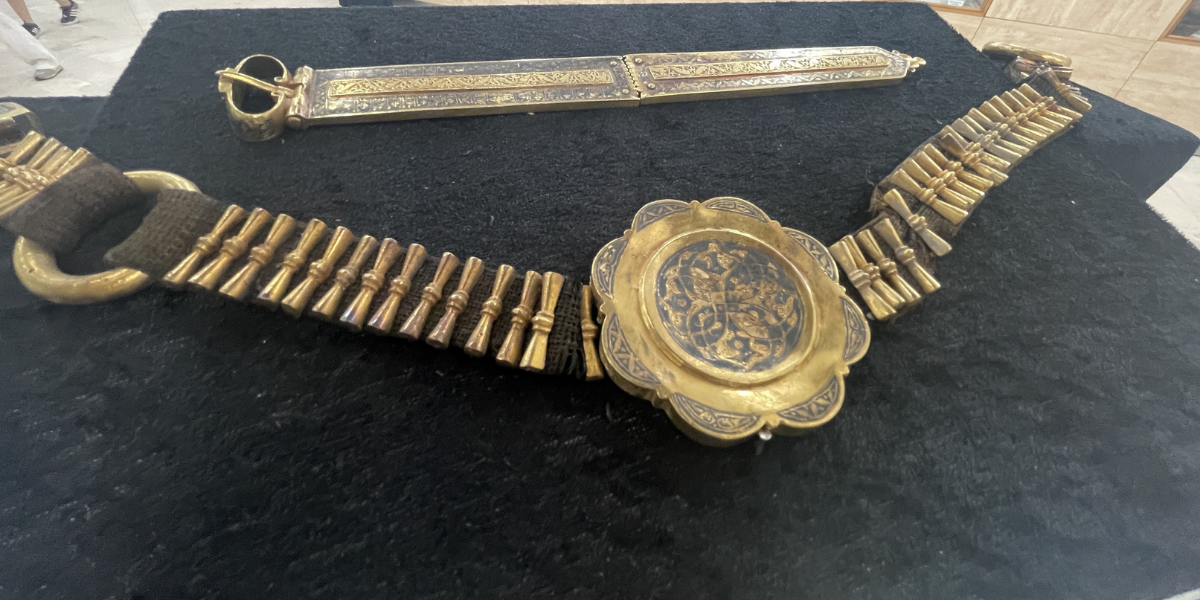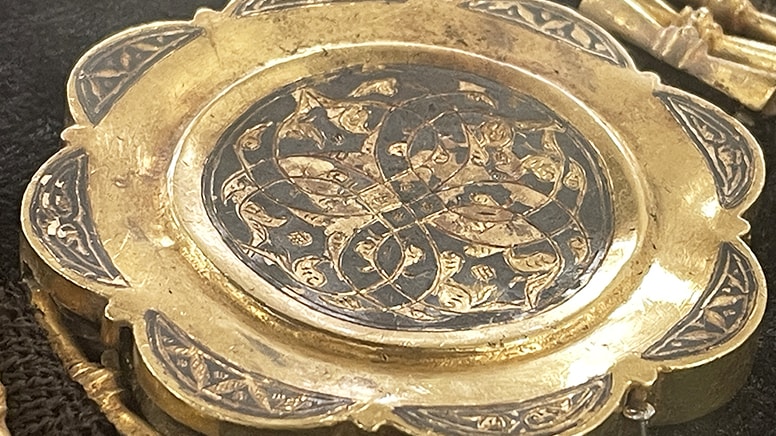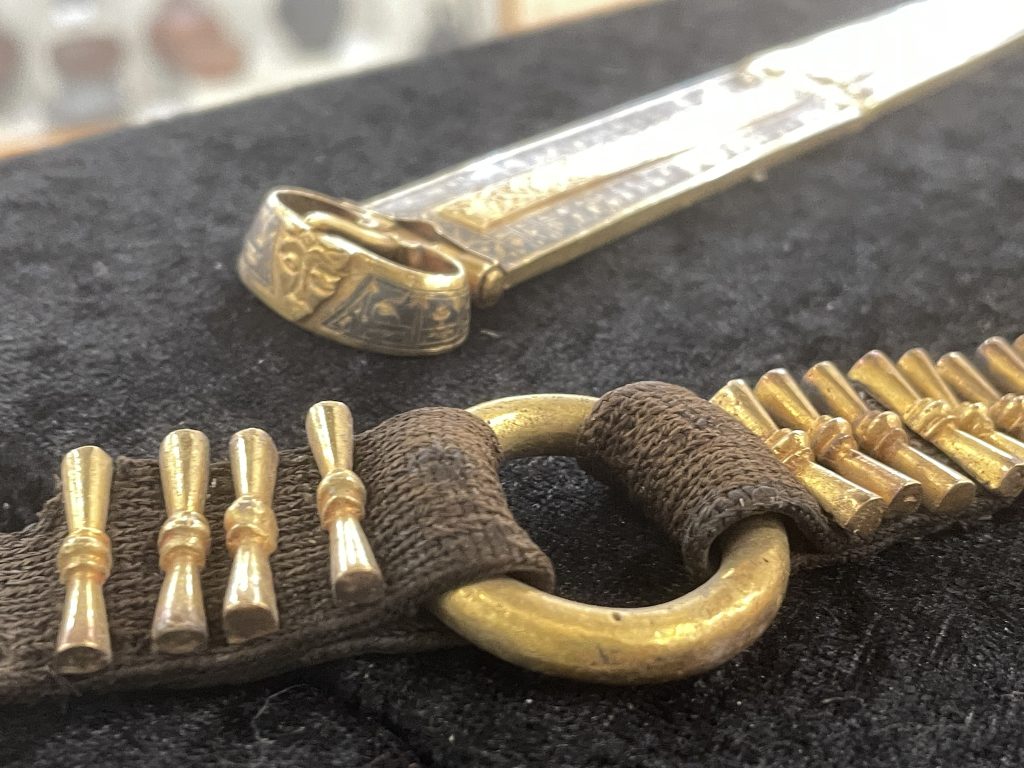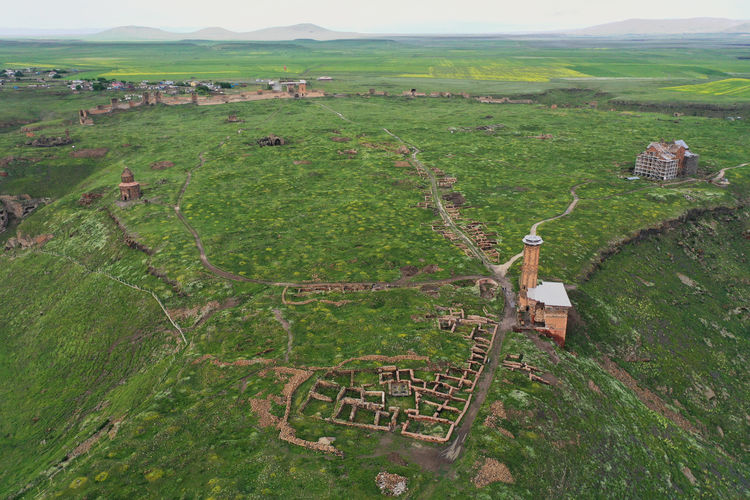
The gold belt unearthed during excavations in Ani Ruins and preserved for 22 years has been put on display
The gold belt unearthed during excavations in Ani Ruins in eastern Türkiye and preserved for 22 years has been put on display at the Kars Archeology and Ethnography Museum.
The gold belt, which was found in 2002 during the excavations carried out under the direction of Hacettepe University Faculty Member Prof. Dr. Beyhan Karamağaralı between 1989 and 2005, was kept under protection for 22 years.
The belt with various figures on it weighs 432 grams.
Hakim Aslan, Acting Director of Kars Archaeology and Ethnography Museum, said: “We know that Ani lived its glorious period in the Middle Ages, and archaeological excavations were started by Russian-born Nikolay Marr in Ani Ruins in the late 1800s. Later, the excavations were carried out by Turkish professors and are still continuing. The gold belt is one of the artifacts unearthed as a result of the excavations carried out in 2002 under Prof. Dr. Beyhan Karamağaralı. The artifact is very important, it is made of gold material.”
📣 Our WhatsApp channel is now LIVE! Stay up-to-date with the latest news and updates, just click here to follow us on WhatsApp and never miss a thing!!

The belt consists of 3 parts: the belt buckle, the belt loops on the second textile piece and the belt plate.
The belt is made entirely of gold material and has ornaments on it. The belt buckle in the middle is made with 8 slices and savat workmanship is seen on the edges. When we look at the belt plate, it is 25 centimeters long and 2.5 centimeters wide. There is a human head figure at the end.

Pointing out that the same figures are seen in the wall paintings of the Uighur period, Hakim Aslan said, “In fact, a third eye is seen here, and the word ‘lisa’ is written on the belt buckle as well as the human figure. The word ‘lisa’ means the owner. On the ceramics we have seen before, the word lisa was used in the sense of bringing good luck and prosperity to the owner.”
The gold belt will be on display at the Kars Archaeology and Ethnography Museum for only 3 months.

Ani has been an important settlement center since the Iron Age. During the excavations in Ani, traces of the Nairis and Urartians, then Persians, Romans and Byzantines were found. Ani, the capital of the Bagratian Armenian Kingdom, was also called “City of 1001 Churches” or “City of 40 Gates” in the 11th century. In the 13th century With the Mongol invasion, the city suffered great damage and lost its importance.
Cover Photo: AA
You may also like
- A 1700-year-old statue of Pan unearthed during the excavations at Polyeuktos in İstanbul
- The granary was found in the ancient city of Sebaste, founded by the first Roman emperor Augustus
- Donalar Kale Kapı Rock Tomb or Donalar Rock Tomb
- Theater emerges as works continue in ancient city of Perinthos
- Urartian King Argishti’s bronze shield revealed the name of an unknown country
- The religious center of Lycia, the ancient city of Letoon
- Who were the Luwians?
- A new study brings a fresh perspective on the Anatolian origin of the Indo-European languages
- Perhaps the oldest thermal treatment center in the world, which has been in continuous use for 2000 years -Basilica Therma Roman Bath or King’s Daughter-
- The largest synagogue of the ancient world, located in the ancient city of Sardis, is being restored











Leave a Reply